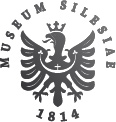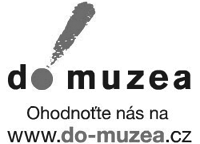Slezský sborník
rok 2012
ročník 110
číslo 3–4
Obsah / Contents
Studie / Articles (s. 165–270)
Petr Kozák: Turek a turecký svět ve světle účtů dvora polsko-litevského prince Zikmunda za jeho pobytu v Uhrách a v českých zemích (1498–1506)
s. 165–180
Turk and Turkish World in the Light of the Court Account Books of Polish-Lithuanian Prince Sigismund during his Stay in Hungary and in the Bohemian Lands (1498–1506)
The Prince Sigismund (since 1506 the ruler of Poland and Lithuania) came from the Jagiello dynasty, which took control of a large area of the Central and Eastern Europe around the year 1500. His stay in Hungary brought him near the Christian and Islamic worlds’ clash zone. In addition to restlessness and hysteria, the Turkish danger brought along also the rise of interest in the feared enemy. Sigismund too was eagerly absorbing everything Turkish. These were not only the fashionable clothing accessories but mainly information gained from people (in particular from the region of Croatia and Slavonia) fleeing the Turkish captivity or seeking ransom money to free their relatives and friends. His interest could be pursued in detail thanks to an outstanding source, the preserved books of court accounts.
Key Words: Court Accounts, Hungary, Jagiellon Dynasty, Late Medieval, Moravia, Ottoman Turks, Poland, Sigismund I the Old, Silesia
Jarosław Kuczer: The Decline or Growth of the Importance of Silesian Barons at the End of the 17th Century and at the Beginning of the 18th Century
s. 181–200
Úpadek nebo růst významu slezských baronů na konci 17. a na začátku 18. století
In chronological sense, the Freiherrenstand was the second noble group after dukes with the title of the higher Silesian nobility. Similarly to the situation in the west of Europe, families with aspirations for emancipation from strict imperial (here royal) control had started using the title of baron. In the 15th century, it had been a critical moment, in which they had been put in line with Silesian dukes as far as public and property rights in the province were concerned, as the first baron followed suit of their earlier, dynastic equivalents. At that time however, there was merely a small group of free state men with the title of baron, which had not yet created a separate, Silesian Herrenstand in the 16th century, which would harmoniously melt into the upcoming system. Such a research problem triggers questions which should not remain unanswered.
Key Words: aristocracy, Silesia, dukes, counts, barons, Freiherren, Reichsfreyherren, Silesia principalities, German aristocracy
Petr Popelka: Okresní silniční výbory ve Slezsku (1868–1928)
s. 201–220
District road boards in Silesia (1868–1928)
The study deals with the formation and development of specific autonomous institutions of Moravia and Silesia – district road boards. The main function of the district road boards was taking care of district roads and the financial and technical respect of it. In comparison to the developed district autonomy in Bohemia, here they had considerably restricted competencies. Originally the district road administration should have been practised by district autonomy like in Bohemia. This, however, remained in Moravia and Silesia not activated until the decline of the Habsburg monarchy. District road boards were created in Silesia as temporary assistant bodies of political administration as early as at the beginning of the 1860s. In 1868 a land law was passed in Silesia about the formation and force of district road boards. The first proper election into district road boards in Silesia was held in 1869. In 1887 the voting system was reformed based originally on the equality principle and ballot, and the principle of three voting curiae was introduced. The last proper election into district road boards was held in 1910. In 1920/1921 instead of old road boards district road administrative committees were appointed whose members were established according to party political affiliation. District road administrative committees terminated their activities in connection with the administration reform in 1927.
Key Words: administration history, district autonomy, district road boards, land board, road net administration, Silesia
Mária Ďurkovská: Činnosť Karpatonemeckej strany na Spiši v rokoch 1935–1938
s. 221–237
The activities of Carpathian German Party in Spiš in 1935–1938
The article monitors political affairs of German community in Slovakia, especially in the Spiš region in 1935-1938. It focuses on the activities of Carpathian German Party and its rivalry with Spiš German Party. A typical feature of Carpathian German Party’s political strategy during its efforts to spread its influence in the whole Slovakian territory was the orientation on cooperation with Sudeten German parties. The attention is thus devoted to assimilation of Carpathian German Party’s political strategy to the objectives of Sudeten German Party, pre-election canvass of Carpathian German Party, its effort to assume as many voters of Spiš German Party as possible, and the conversion of Spiš German Party members to Carpathian German Party, too.
Key Words: Carpathian German Party, Spiš German Party, Spiš, elections, Franz Karmasin, Konrad Henlein
Michal Macháček: Gustáv Husák za II. světové války
s. 239–270
Gustáv Husák during the Second World War
The article focuses on the life of Slovak communist politician Gustáv Husák in the Slovak Republic during the Second World War. It mainly points out Husak's illegal work in the Communist Party of Slovakia, his persecution and participation in the Slovak National Uprising. Additionally, the text extensively analyses social relations between different participants and studies their motives of behavior. All of this is also put into the perspective with the consideration of Czech-Slovak relations, which had significantly changed during the war. The work is to deliberately exceed the biographical theme.
Key Words: Gustáv Husák, World War II, Communist resistance, Slovakia, Czech-Slovakia relations, Czechoslovakia, Communist Party of Slovakia, Communist Party of Czechoslovakia
MATERIÁLY / MATERIALS (s. 271–277)
Jan Kubica: Horst Bienek a jeho literární autobiografie
s. 271–277
Literary Autobiographies of Horst Bienek
The contribution contains an essay about literary autobiographies of Horst Bienek. At first, the author is put into after war generation of Silesian authors and thereafter this part is followed by basic autobiographical data. The brief characteristic of the author’s Gleiwitzer Tetralogy is the starting point for the essay about the autobiographical features of Bienek’s novels. This phenomenon is furthermore explored with the use of concrete illustrations from primary texts, and those are then reflected by means of secondary sources. The autobiographical features are used as the background to capture the issue of Silesian or Upper Silesian identity.
Key Words: literary autobiography, Upper Silesia, identity, multicultural environment, multilingualism, loss of homeland
Recenze / Reviews (s. 278–294)
Zprávy o literatuře / Brief Notices (s. 295–310)
Kronika / Chronicle (s. 311–317)
Bibliografická příloha / Bibliography (s. 318–319)
Poslední aktualizace článku: 06.10.2015
Vytisknout celý článek







